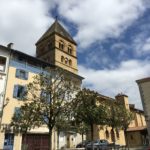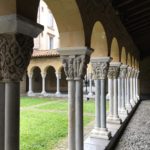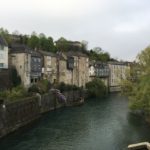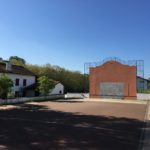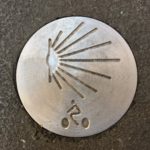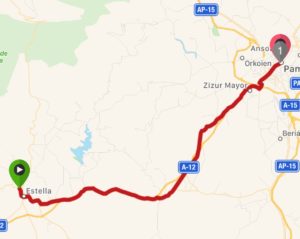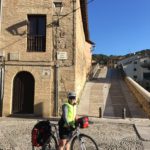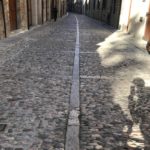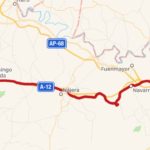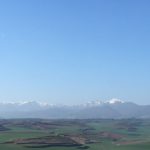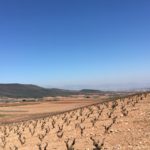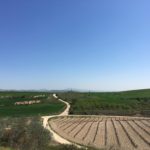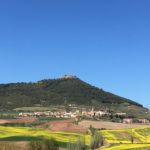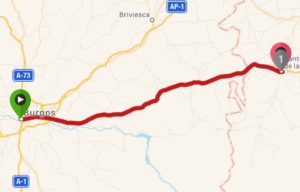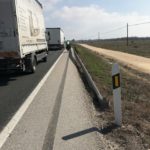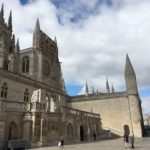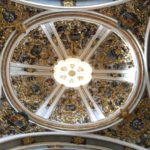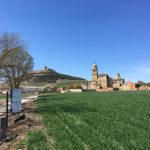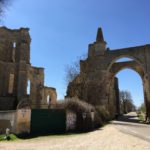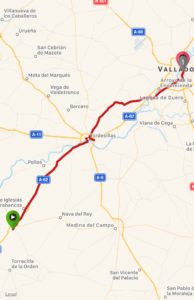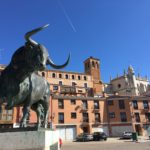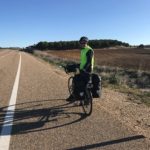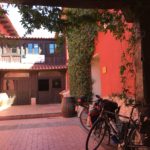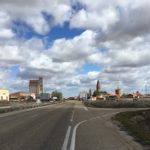Beziers to Montpellier – 82km
(D28, N112, D37e16, D137e2, D32e12, D51, D613)
It was one of those days where cycling conditions alternated between the sublime and the ridiculous. On leaving Beziers, we made a mistake and found ourselves on the N112, which was extremely fast and busy with returning holiday traffic. We exited when we could and a short time later realized we were near the Canal du Midi and could cycle on a paved and peaceful path for a few kilometres. Close to Portiragnes, as we left the canal, the map showed that we were only 500m from the coast. A short detour took us to the shores of the Mediterranean! This was a landmark as, since 2013, we have cycled from the Pacific to the Atlantic to the Mediterranean. We savoured the moment. We also stopped at a patisserie near the beach for a second breakfast. We asked for fried eggs and were served 4 each!
We continued on winding quiet roads just inland, past camp sites, trailer parks and amusement parks. At Agde, we spotted the interesting Cathédrale Saint-Etienne across the river. Constructed of black basalt in the 12th C, it served also as a fortress. The local hotel is built right up against the walls.
After Agde, we rejoined busy roads. Apart from a short stretch on a bike path near Bouzigue, we had to contend with heavy traffic into Montpellier. As on previous days, stretches of road were bordered by tall Plane trees, which may have been planted by nobility to line roads leading up to their estates, or by Napoleon, who apparently ordered extensive planting to shade his marching armies from the heat of the midday sun. Whatever the history, the trees complicate life for cyclists, as they narrow the road, preventing any possible room for hard shoulders (something already sorely lacking in our experience cycling in France so far), the roots push up the pavement, while the shade from the canopy disguises the bumps!
We had good views of the Étang de Thau, into which both the Canal du Midi and the Canal du Rhône enter to access the sea at Sète. The lagoon is the source of large amounts of shellfish, in particular, oysters.
Encounters: – A young women who walked up to us as we were having a final coffee outside our hotel in Beziers. After asking about our trip, she said our family and friends must be very proud of us (we said they are), that she would love to do the same sometime and wished us “bon voyage et bon courage”;
– By the beach at Portiragnes, we were approached by another women, Jutta, who had cycled with her husband in South and central America and was envious of our journey;
– Last evening at dinner we were served by a young women from Venezuela who had completed two years of law in her home country and has just been accepted into law school here. She wishes to practice international humanitarian law (we gave her our card);
-On Sunday in the Place royale du Peyrou, we met a couple from the Netherlands who were with their 6 year old son. They were experienced and enthusiastic cyclists and were starting a week’s trip from Montpellier to Barcelona. Their son was able to pedal on the trailer towed by his father (see picture below).
We are now signing off until April 30 as we are taking a break to visit again with our newest grandson, his big sister and their parents.
Wildlife notes: Glossy Ibis and Greater Flamingoes







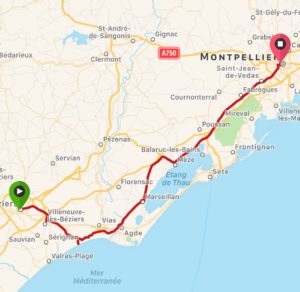



















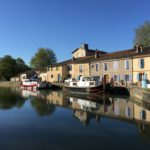
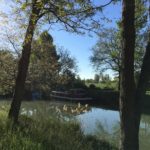
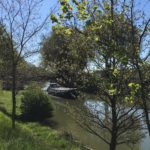

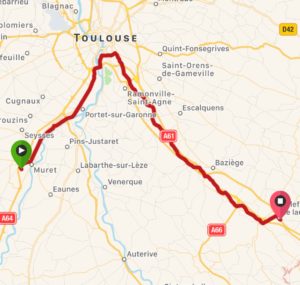






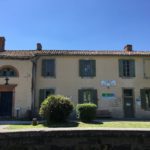
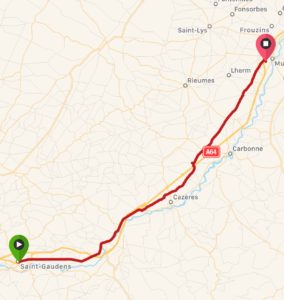

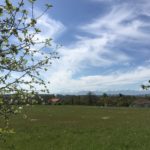

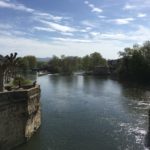
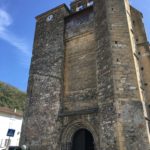
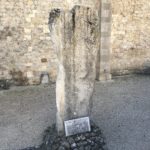
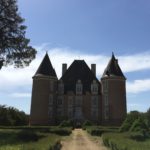
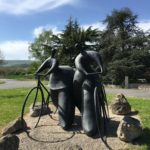
 Saint-Gaudens is a strange place. The city is at an altitude of 405 m on a ledge overlooking the valley of the Garonne, facing the Pyrenees. Consequently, many of the old buildings, including our hotel, have high balconies to take advantage of the view. Unfortunately, that view is dominated by an enormous pulp mill, built in the 1950’s (but without the distinctive odour that we associate with pulp mills in Canada)!
Saint-Gaudens is a strange place. The city is at an altitude of 405 m on a ledge overlooking the valley of the Garonne, facing the Pyrenees. Consequently, many of the old buildings, including our hotel, have high balconies to take advantage of the view. Unfortunately, that view is dominated by an enormous pulp mill, built in the 1950’s (but without the distinctive odour that we associate with pulp mills in Canada)!